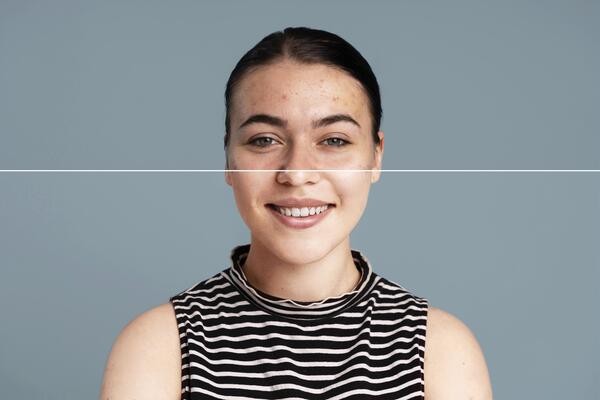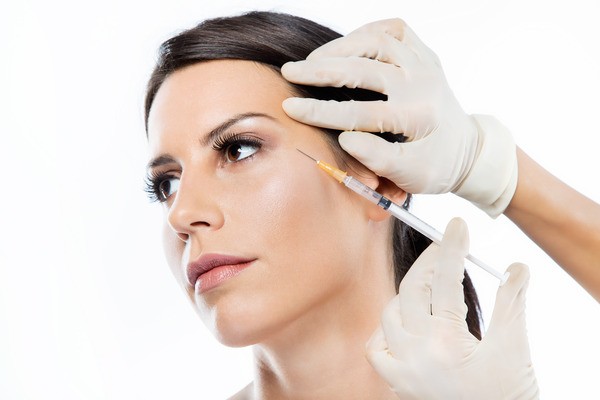
Androgenic Alopecia in Men: Symptoms, Causes, Treatment
Introduction
Hair loss is the most common problem that most men face all over the world. Surely, hair is the most prized possession for men but as the body starts to grow older, hair-loss becomes more severe. Androgenic Alopecia, which, is also, known as “male pattern baldness”, is the most common type of hair loss among men. Although hair-loss is also, found in women, this particular type is mostly found in men due to the specific androgenic pathway it follows. Today we are going to discuss the various symptoms, causes for androgenic alopecia in men. In addition, we will also discuss some available treatments for the same.
What is Androgenic Alopecia?
Hair-loss from any part of the body for some reason is termed medically as Alopecia. Androgenic alopecia is when the androgens along with genetics result in hair loss in men following a specific pattern. It has no particular age limit and can affect older as well as younger men. It has been, found that most men about the age of 50 have one or the other form of pattern baldness. It is a very common disease and affects men as well as women although not so much. Conversion of terminal hairs into short, thin, and slight-coloured hair is characterised as Androgenic alopecia.
What are the symptoms?
The disease being an extremely common one can be, spotted easily. Some of the symptoms of Androgenic alopecia is as follows.
- If your hair loss has started at the temples or the crown of your head, you have a case of pattern baldness. It can be a singular bald spot or in the shape of an “M”.
- A receding hairline on the forehead and gradual thinning of hair on the top is also a common symptom of the disorder.
- Hair may start to shed more than usual and gradually increase the pace.
- Long, thick, hair may start to transition into thin, short, vellus hairs.
- In men, this disorder may result in complete baldness starting from the receding hairline on the forehead. However, in women, this does not cause complete baldness and only results in hair loss on the crown area of the head.
What are the causes?
Androgenic alopecia in men can occur due to many reasons. Below are some of the most common causes.
- This is a genetic disorder. In fact, most of the people who have a case of androgenic alopecia also have a family history of baldness.
- Androgens are the most important hormones in men to promote the growth of secondary sexual characteristics such as hair and voice. They have also been, linked strongly as a cause for male pattern baldness.
- The growth cycle of hair is also an important cause. After the end of the growth cycle, the hair usually begins to shed and no new hair growth takes place.
- On the contrary, such hair loss can also occur due to the intake of anabolic steroids or artificial growth hormones. Certain cancers and thyroid conditions can also be the cause behind Androgenic alopecia.
- Other health conditions can also be behind hair loss. When the hair loss is, accompaniedby redness, pain, or peeling of the scalp it can also lead to complete baldness.
- Abrupt hormonal changes are also a primary cause. Especially in women during pregnancy, due to the hormonal changes, androgenic alopecia can occur.
- Stress, anxiety, depression are also some of the causes that are responsible for the disorder.
- Hairstyles that cause your hair to be, pulled back and use of excessive chemicals on the hair may also be responsible.
What are the treatments?
Although androgenic alopecia is common and there is not much to worry about it. There are still some treatments available to reduce the severity. In some cases where it also is the cause of some other health problems, these treatments can be effective.
- If you have not lost a lot of hair, then getting a new haircut that can help conceal the underlying fact of a hair loss can help. You can also try wearing wigs or hairpieces to hide severe baldness.
- Medications such as Minoxidil and Finasteride can also be, used for slowing down hair loss. Minoxidil needs to be, applied directly to the scalp and it helps stimulate the growth of new hair in some men. Finasteride is an oral medication and has the same effect as Minoxidil but with a higher success rate. However, once you stop taking any of the medications the hair loss will possibly return. Certain side effects have also been, observed. In case you face any severe side effects consult your physician as soon as possible. You should also consult your physician before taking any of the hair-growth or Hair loss prevention medications, as they might not be suitable for you.
Finally, the most effective treatment on androgenic alopecia is hair transplant. Hair transplant works by picking hair from the back of the head or any part of the body, which has enough hair density and using it as a transplant for the balding areas. The process can be, a bit expensive but it produces satisfactory results.
Even though it is a surgical technique, the recovery period is short and you can get back to work in a few days of the surgery. The surgery itself does not consume much time depending on the expertise of the surgeon, and when it comes to experience and expertise there is no one better than Dr. V.S. Rathoreis.
Dr. Rathoreis an outstanding surgeon and an exceptional human being. With a vision to, successfully grow as a result-oriented surgeon Dr. Rathore started out as a surgeon after seeing many different people suffering from trauma and could not get the proper surgery. He has been, focused on flourishing the well-being of his patients, satisfy all their wants, and needs since, 2003. With over 9000 successful surgeries and more than 2100 Hair transplants, he surely has helped his patients gain the self-confidence they had lost to age and time.
Dr. Rathore and his team offer many more services other than hair transplants such as Male breast correction, Male genital surgery, Female genital surgery, Sex change, Scar management, Laser surgery, and Cosmetic breast surgery. With the core values of keeping the patient first, maintaining professionalism, and respecting everyone, Dr. Rathore and his team are always available for fulfilling any needs and helping their patients 24/7.
Conclusion
Androgenic alopecia can affect men of all ages. It is genetic for the most part and can occur in men in their 20s. Suffering from baldness in this age or any other can cause a big change, which you may or may not be, able to accept. We have tried our best to help you inform about Androgenic alopecia in men and the various symptoms, causes, and treatments. However, if you feel like have a case of Androgenic Alopecia and are in need of a Hair transplant, or need an expert opinion on any related issues. All you have to do is Contact us and book an appointment with us, and our expert staff along with Dr. Rathore will always be glad to help you.







